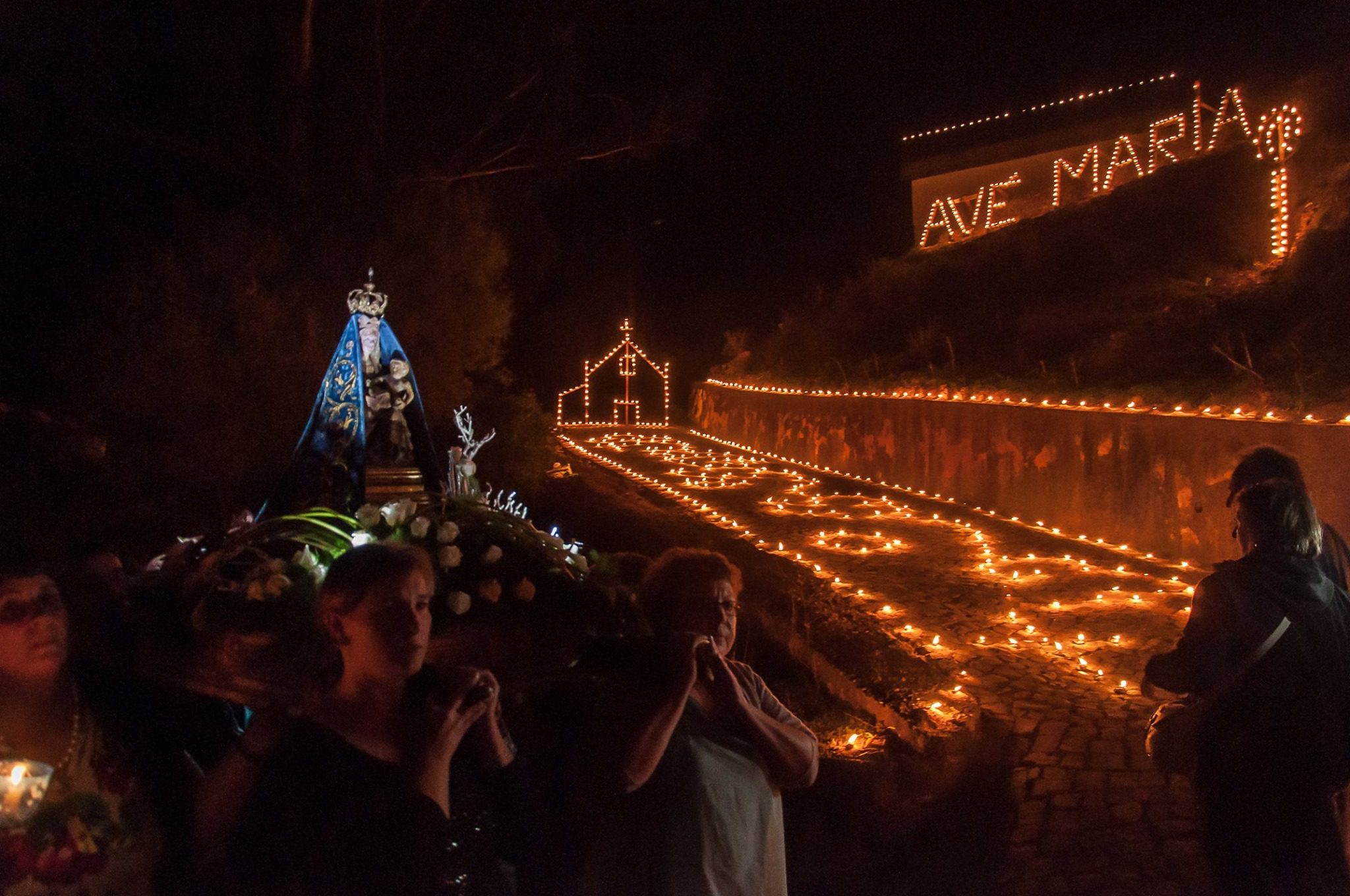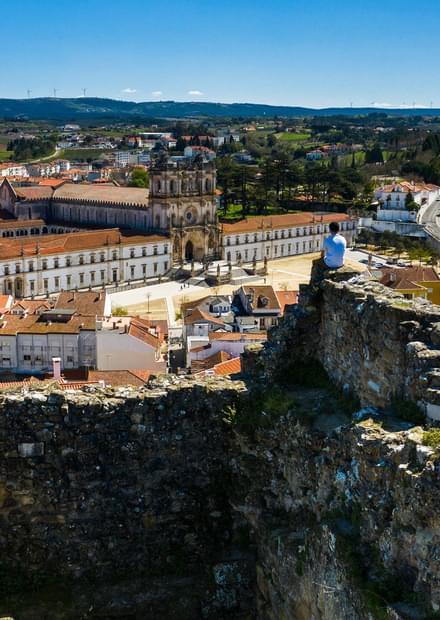Die Ursprünge der Schneckenprozession in Reguengo do Fetal nahe Batalha gehen auf das 19. Jahrhundert zurück. Sie sind eng mit der Verehrung der Muttergottes von Fetal verbunden. Diese tief verwurzelte Volksfrömmigkeit führte sogar zur Errichtung des nach der Heiligen benannten Heiligtums.
Das Bildnis der Madonna von Fetal ist eine Steinskulptur aus dem 17. Jahrhundert. Sie ist für das Verständnis der Wallfahrten und des Glaubens an diese Heilige unerlässlich.
Eine lokale Legende besagt, dass die Verehrung der Muttergottes von Fetal auf eine junge Hirtin zurückgeht, die ihr Vieh hütete und weinte, weil sie hungrig war. Da erschien ihr die Muttergottes und schickte sie zu ihrer Mutter mit den Worten: „Sag ihr, dass dich eine Frau geschickt hat, um ihr zu sagen, dass in der Arche Brot ist.“ Die leere Arche wurde auf wundersame Weise mit Brot gefüllt.
Bei den nächtlichen Prozessionen werden Tausende von in Olivenöl getränkten Schneckenhäusern verwendet, die mit einer Schnur verbunden sind. Sobald sie angezündet werden, erzeugen sie einen einzigartigen visuellen Effekt.
Bei der ersten Prozession, die nach dem Ausschalten der öffentlichen Beleuchtung stattfindet, wird das Bild der Madonna von Fetal vom gleichnamigen Schrein zur Pfarrkirche gebracht. Am darauffolgenden Samstag wird die Prozession in umgekehrter Richtung wiederholt.
An der Vorbereitung der Tausenden von Schneckenhäusern, die bei den Prozessionen verwendet werden, sind rund 200 Personen aus dem Dorf Reguengo do Fetal beteiligt – von Kindergartenkindern bis hin zu den Bewohnerinnen und Bewohnern des Altersheims. Erwähnenswert ist auch die Beteiligung der aus der Gemeinde stammenden Auswanderer, von denen viele in den Vereinigten Staaten von Amerika leben. Zum Zeitpunkt der Feierlichkeiten kehren sie in ihr Heimatdorf zurück und beteiligen sich aktiv an den Dekorationen.
Die Beleuchtung der beiden Prozessionen mit Schneckenhäusern ist mit einem beträchtlichen Material- und Ressourcenaufwand verbunden: Es werden 6.000 Meter Kerzendocht zur Verbrennung des Öls, 12.000 saubere Schneckenhäuser und 500 Liter Öl zur Befüllung aller Häuser benötigt. Die Schneckenhäuser werden auf einer Strecke von etwa 800 Metern auf Grundstücken, Mauern oder Wänden platziert und bilden Motive oder Worte, die mit dem Leben der Gemeinde, der Kirche und anderen Themen in Verbindung stehen.









